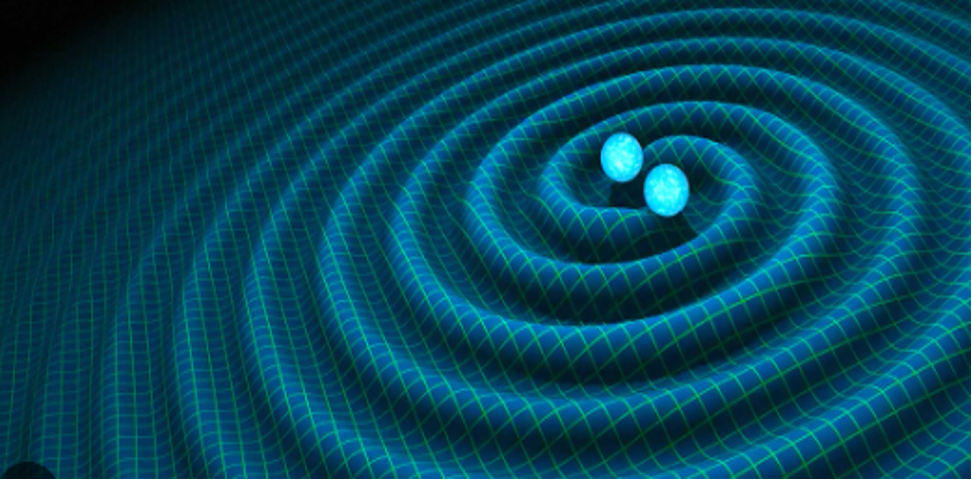

Cosmox Blogs
Gravitational Waves: The Story of Space Time
“Matter tells space how to bend; space tells matter how to move”, these were the words of Einstein after he published the theory of general relativity which is one of the world’s best tested theories.
In this theory, Einstein described space as a fabric made by combining the three dimensions of space with the fourth dimension of time and is known as the fabric of space-time. Gravity is described here as a result of the warping of objects in this fabric. In simple words all objects form a curve in the fabric of space time depending on their gravitational force. The higher the mass of the object the greater the curve.
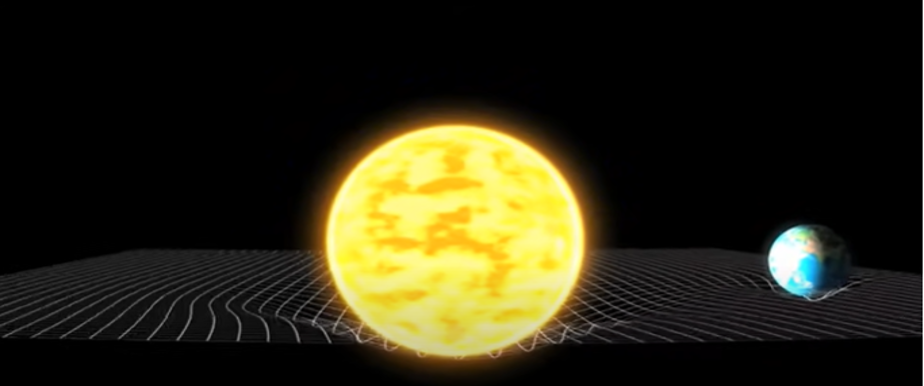
When objects with immense mass accelerate, they cause disturbances in the curvature of Space-time. These disturbances or ripples are called gravitational waves.
Gravitational waves are immensely hard to detect as gravity is a very weak force. When Einstein published the theory of General relativity, he thought humans might never be able to detect gravitational waves. However, humans could directly detect these waves in 2015.
The First Detection In 2015
Gravitational waves hardly interact with any other form of matter because as mentioned above gravity is a very weak force. Only objects that have masses beyond imagination can produce gravitational waves that can be felt. Even from massive events like black hole mergers, the disturbances they cause in space-time are minuscule. Another reason why it is hard to detect gravitational waves is that the intensity of the waves dies out with distance and most detectable sources of these waves like black holes or neutron star mergers are millions to billions of light years away from us.
But despite these challenges, we have been able to detect gravitational waves in 2015. About 1.3 billion years earlier, two massive black holes collided. The collision released massive amounts of energy in a fraction of a second (about 50 times as luminous as all the stars in the visible universe combined) and sent gravitational waves in all directions. These waves reached Earth on 14 September 2015 where they were detected by researchers at Laser Interferometer Gravitational Wave Observatory (LIGO).
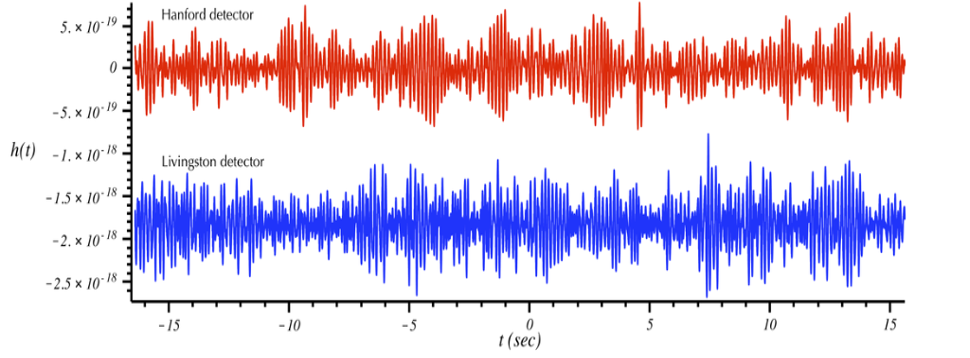
In 2017, the LIGO as well as the Virgo detectors made a remarkable detection of gravitational waves coming from colliding neutron stars.
The Technology Behind Detecting Gravitational Waves
The stretching caused by the gravitational waves is incredibly small, often smaller than the diameter of the proton. Hence they require huge detectors to be able to successfully detect them. To measure such small signals, our detectors must have greater accuracy than 1/1,000 the size of a proton.
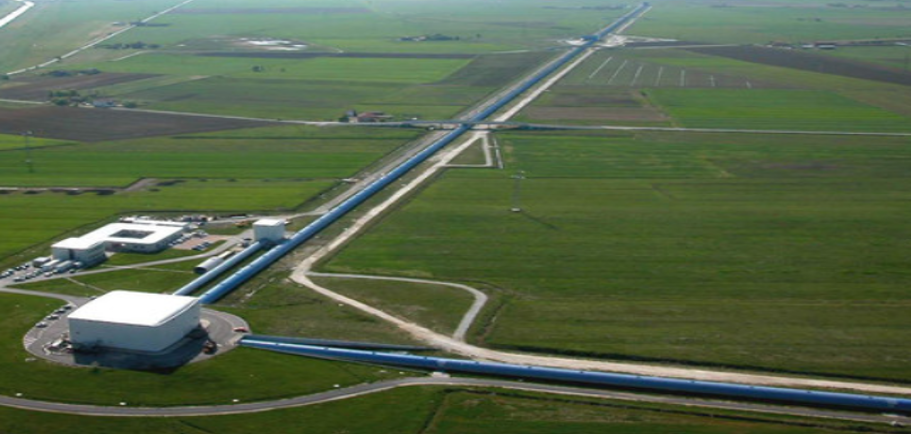
The gravitational wave detectors like the LIGO detector are basically a type of interferometers.
When two or more waves carrying energy interact you get a third wave whose shape and size depend on the patterns of the original two waves. An interferometer works by splitting a beam of light into two parts using a beam-splitter, which is like a mix between a mirror and a piece of glass. This splitter lets half the light pass through while reflecting the other half. One part of the split beam, called the reference beam, goes straight to a mirror and then to a detector. The other beam, which goes to the object being measured, also bounces off a mirror and returns to the same detector. Because this second beam travels a slightly different path, it becomes a little out of sync (or out of phase) with the first beam. When the two beams meet again, their difference can be detected, allowing for incredibly accurate measurements.
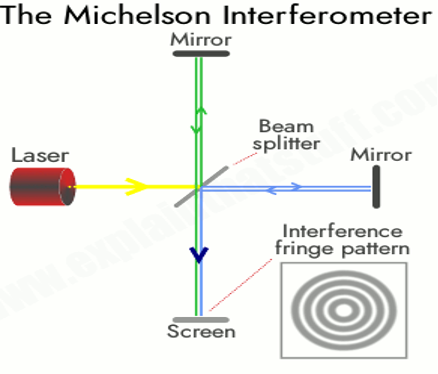
Gravitational wave detectors consist of two right-angled ‘arms’ of several kms length in an “L” shape, with a mirror at each end. Here’s how they work: a laser beam is split into two and sent down the two arm beams then bounce back from the mirrors and they recombine at a light detector, where they interfere with each other and create a pattern. The interferometer is carefully configured so that, normally, the recombined beams of light cancel each other out. When a gravitational wave interacts with the interferometer, it stretches one arm and compresses the other very minutely. As the detectors are designed in a way such that they are extremely sensitive to such changes thus this results in changing the distance each laser beam travels and the interference pattern of light that is detected. This process provides us with valuable information about the source that originated the waves millions of years ago.
Overcoming The Challenges & Ultimate Precision
Noise, such as physical vibrations from the environment (from cars driving on nearby roads to waves crashing on distant ocean shores), fluctuations within the laser itself, and even molecules crossing the path of the laser could hamper LIGO's efforts to make its sensitive detections. Keeping this noise at bay creates many engineering challenges:
-> Firstly, LIGO’s 4 km beam tubes are kept under an ultra-high vacuum to prevent sound waves and temperature changes from disturbing the laser’s path.
-> Secondly, the mirrors at each end have advanced seismic isolation, using electromagnetic and hydraulic systems to counteract vibrations.
-> Finally, LIGO detectors don’t work alone. A single detector can indicate a potential gravitational wave, but to confirm it’s not just random noise, at least two detectors are needed. Gravitational waves travel at the speed of light, so if one is detected, we can check if the signal arrives at another detector with the expected time difference of a few milliseconds. The detectors are extremely sensitive, picking up events as minor as a tree falling or a hammer dropping, but the odds of such events happening at multiple detectors with the exact timing are very low. Thousands of sensors also monitor environmental noises to help distinguish real gravitational wave signals from background interference.
Importance of Gravitational Waves
The gravitational waves bring us very different kinds of information about the universe that you could never see with electromagnetic waves as these waves hardly interact with any other form of matter.
Probing Extreme Conditions in the Universe - Gravitational waves allow us to study extreme astrophysical events, like neutron star collisions and black hole mergers. These events generate conditions of gravity, density, and energy that cannot be replicated on Earth. Observing these phenomena helps us understand the behavior of matter and spacetime under the most extreme conditions known to science.
Insights to the Big Bang - The Big Bang is expected to be a prime candidate for the production of the many random processes needed to generate gravitational waves (and the CMB), and therefore may carry information about the origin and history of the universe. If these gravitational waves truly originated in the Big Bang, these waves would have been stretched as the universe expanded and they can tell us about the very beginning of the universe—they would have been produced between approximately 10-36 to 10-32 seconds after the Big Bang, whereas the CMB was produced approximately 300,000 years after the Big Bang.
Multimessenger in Astronomy - Multimessenger astrophysics represents an emerging approach to studying the Universe, leveraging multiple cosmic “messengers” to gather information about astronomical events.
A prime example of multimessenger astrophysics in action was the 2017 detection of a neutron star-neutron star merger. Observatories detected not only the gravitational waves produced by the merger but also electromagnetic emission from radio waves to gamma-rays (the latter in the form of a gamma-ray burst), providing a multi-faceted view of the event. Such combined observations allow researchers to cross-verify findings, probe the physics underpinning these events, and open new windows into the universe’s mysteries.
Estimating the expansion of the Universe using a black hole - neutron star binary- Since it first exploded into existence 13.8 billion years ago, the universe has been expanding, dragging along with it hundreds of billions of galaxies and stars, much like raisins in a rapidly rising dough.
Now scientists from MIT and Harvard University are using gravitational waves emitted by a relatively rare system: a black hole-neutron star binary, a hugely energetic pairing of a spiraling black hole and a neutron star. As these objects circle toward each other, they should produce space-shaking gravitational waves and a flash of light when they ultimately collide. The emitted gravitational waves, if detected on Earth, should provide an independent and precise measurement of the system’s distance. The researchers calculate that detecting even a few should yield the most accurate value yet for the rate of the expanding universe.
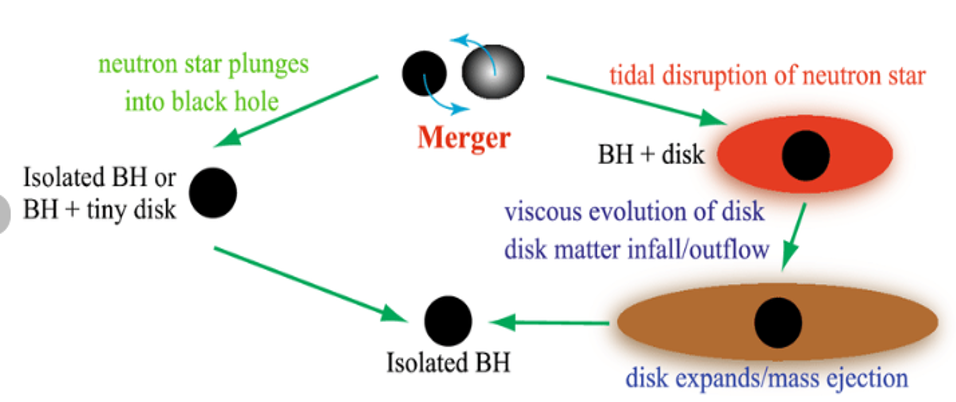
The Future Prospects
The Laser Interferometer Space Antenna (LISA) is an upcoming gravitational wave detector project. It will be the first space-based observatory dedicated to studying gravitational waves. The current ground-based detectors like LIGO are limited in size and sensitivity, meaning that they are only able to detect high-frequency gravitational waves from particular sources (such as merging stellar-mass black holes and neutron stars). LISA will enable scientists to study gravitational waves generated by many different types of events, from interacting compact stars to merging supermassive black holes at the cores of galaxies. To detect lower-frequency gravitational waves, an observatory must span millions of kilometers – something that can only be achieved in space.
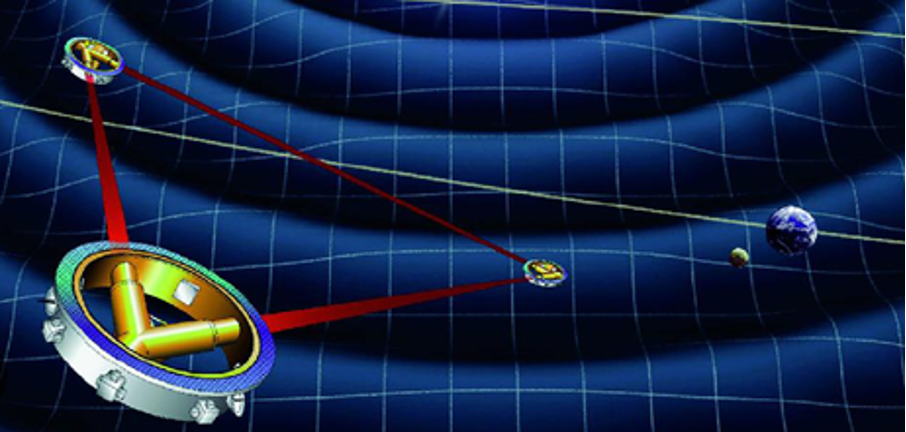
LISA is planned to launch in the year 2035 and will consist of three arms (spacecraft) which will be millions of kilometers long. The arms will form a triangle and will fly behind our planet as The Earth orbits the sun. The spacecraft will sit in a heliocentric orbit about 50 million km from Earth, with a distance of around 2.5 million km between each spacecraft. LISA will detect ripples in spacetime through subtle changes in the distances between free-floating cubes nestled within each spacecraft. Changes in the relative distances between these golden cubes will be tracked with extreme accuracy using laser interferometry.
Conclusion
In conclusion, gravitational waves have given us an exciting new way to explore the universe. Through observatories like LIGO, we’ve started detecting these waves and learning about incredible cosmic events, like black hole collisions. And the future looks even brighter—soon, LISA (Laser Interferometer Space Antenna) will help us detect gravitational waves in a beer way from space. Although it’s still early days, gravitational waves could reveal new secrets about the universe and answer questions we’ve been asking for a long time.

Cosmox Blogs
A non profit organization that works on writing and delivering blogs on cosmology, natural sciences & environment, so that people can learn more about it. We even run a forums page, where our users interacts with each other and discuss about Cosmology, Natural Sciences & Astronomy. We even run an instagram and a youtube channel with podcasts.